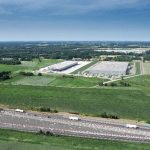Do you remember the first time you heard the term “sustainable development”? Or have you wondered why many talk about global warming as a life or death situation? Well, if you've been paying attention it's because it really is.
Since the last century, world leaders have emphasized the importance of establishing economic models that look beyond current circumstances. This is known as sustainable developmentsince “it seeks alternatives to satisfy the needs of the present without compromising the ability of future generations to satisfy their own needs,” as established in the World Commission on Environment and Development (WCED) of the United Nations, in 1987.
Since then, efforts to make sustainability the norm in all areas have not stopped, and have even radically transformed university culture. In this article, we will explore the bases of sustainable development: from the types of non-renewable energy that we still use, its negative impact on the planet and how Environmental Engineering seeks to combat it.
Types and uses of non-renewable energies
What do natural gas, oil and coal have in common? We know them as types of non-renewable energy, that is, they are found in nature in limited quantities and when used, sooner or later, they are depleted:
- Coal: the first fossil fuel to be exploited, it can be used in thermal electricity generation plants, in industry, at home and in transport.
- Oil: the main source of energy on the planet and essential in transportation, since it produces gasoline and diesel, among other products, such as propane, butane, lubricating oils and asphalt.
- Natural gas: its deposits are closely linked to those of oil and it is used above all in heating, cooking and in industrial environments for the generation of thermal energy.
For many years, this type of non-renewable energy managed to satisfy the needs of the world's population without much problem, but, as they say, nothing lasts forever.
Environmental impact and challenges of non-renewable energies
First, these resources take thousands of years to regenerate, so their excessive use over the years has become unsustainable in the long term. And what will happen then? Without a doubt, the most worrying thing is the environmental impact that the burning of fossil fuels has (and will continue to have) on the planet.
According to the Global Carbon Budget, this is the main source of greenhouse gas emissions in the atmosphere, with around 36.8 billion tons in 2023. This represents an increase from the previous year's level and goes against measures to reduce carbon emissions.
For this reason, the scientific community has warned about the urgency with which we must act through specific measures and policies to stop climate change and avoid a true environmental collapse.
“If biomass energy consumption increases substantially in the future, it is unlikely that the planet will remain habitable,” warned Alessandro Agostini, a researcher at the Italian National Agency for New Technologies, Energy and Sustainable Economic Development.
All this tells us that it is no longer enough to maintain the emissions levels of previous years, but that a drastic and rapid reduction at a global level is crucial. Precisely, the member countries of the Dubai Summit (COP28) agreed on various measures in their Global Review, among them, the “rapid and progressive” reduction of fossil fuels and their subsidies, as well as the tripling of renewable energy capacity worldwide. world.
The question remains: why are there those who still resist the use of renewable energies, such as solar, wind and hydraulic energy? According to Agostini, this is mainly a question of infrastructure, since although in many markets, renewable energies become cheaper, the current energy infrastructure continues to depend on fossil fuels.
Environmental Engineering as a sustainable solution
In these urgent circumstances, the Environmental Engineering degree at Universidad Anáhuac Querétaro is absolutely crucial to plan a better future for everyone.
Our program is based on the balance of five main axes: energy, environment, sustainability, economy and business, and society. Furthermore, at Anáhuac Querétaro, we believe that the preservation of the environment should not be an impediment to economic or technological development, but quite the opposite; It is necessary to imagine a functional world in the long term.
This is why our 2025 educational model is committed to comprehensive training that not only guarantees academic excellence, but also the means to propose innovative and sustainable solutions to all the challenges of the future.
All of this materializes in the broad job potential that awaits you upon graduation, from public and private organizations with an environmental focus, to innovative technology companies for the development of sustainable alternatives.
As Franco Guerrero Orozco, coordinator of the Environmental Engineering degree at the Anáhuac Querétaro University, advises, “if you have that thorn of wanting to help the environment, of being able to develop yourself in the engineering part and you want to contribute to a healthier world, then Environmental engineering is the career for you.
Of course, this program is not for those who do not feel a true passion for making a difference in their environment, but if this is your case, what are you waiting for? Contact us to learn more about this unique program and start generating the solutions that will lead us to a better world.
You have what it takes to do this and more, do you dare to discover it?



